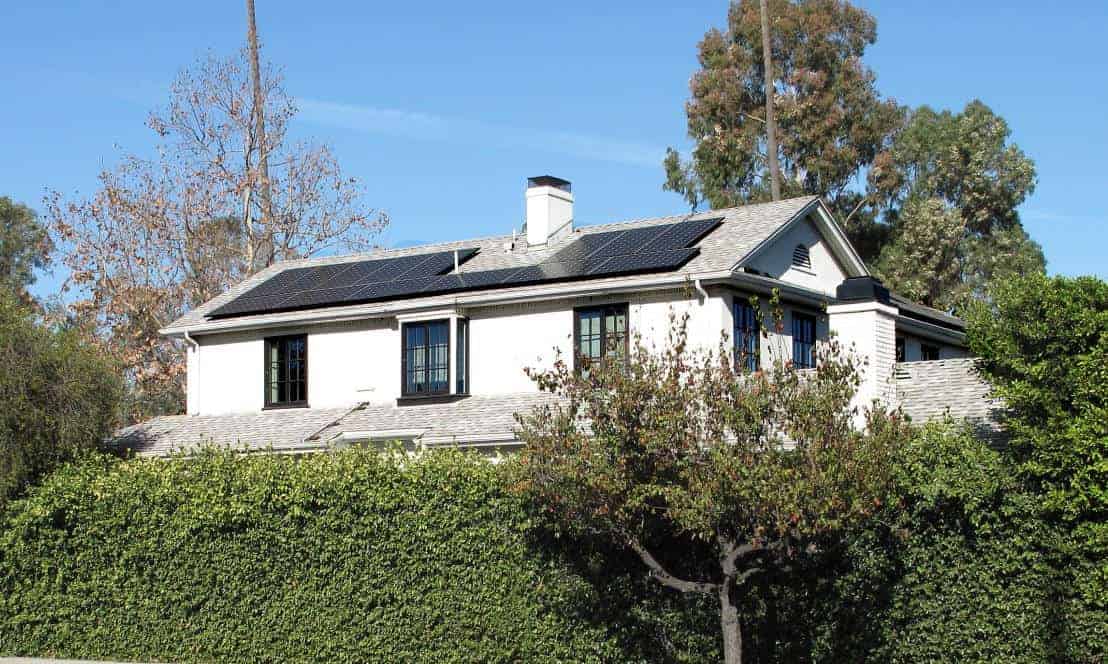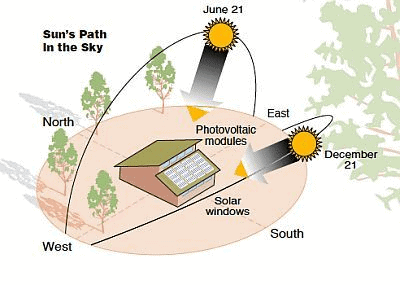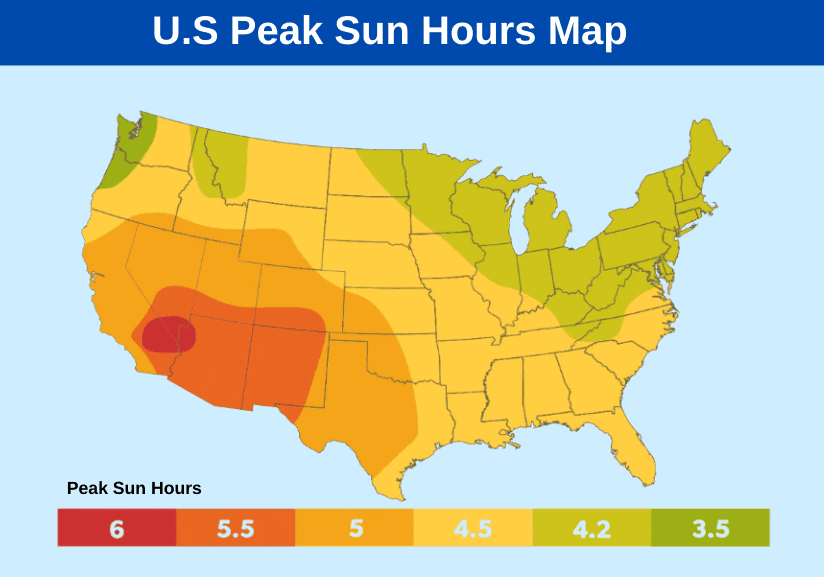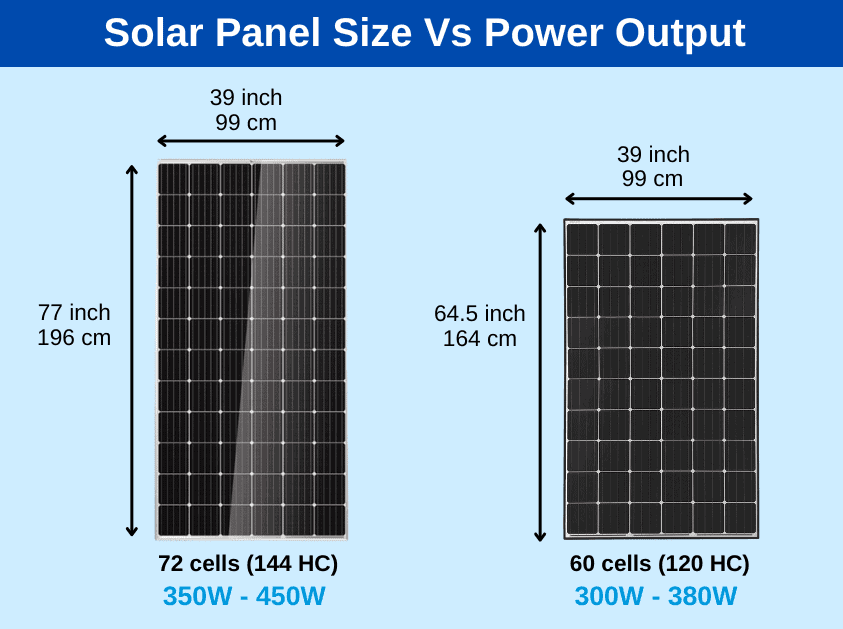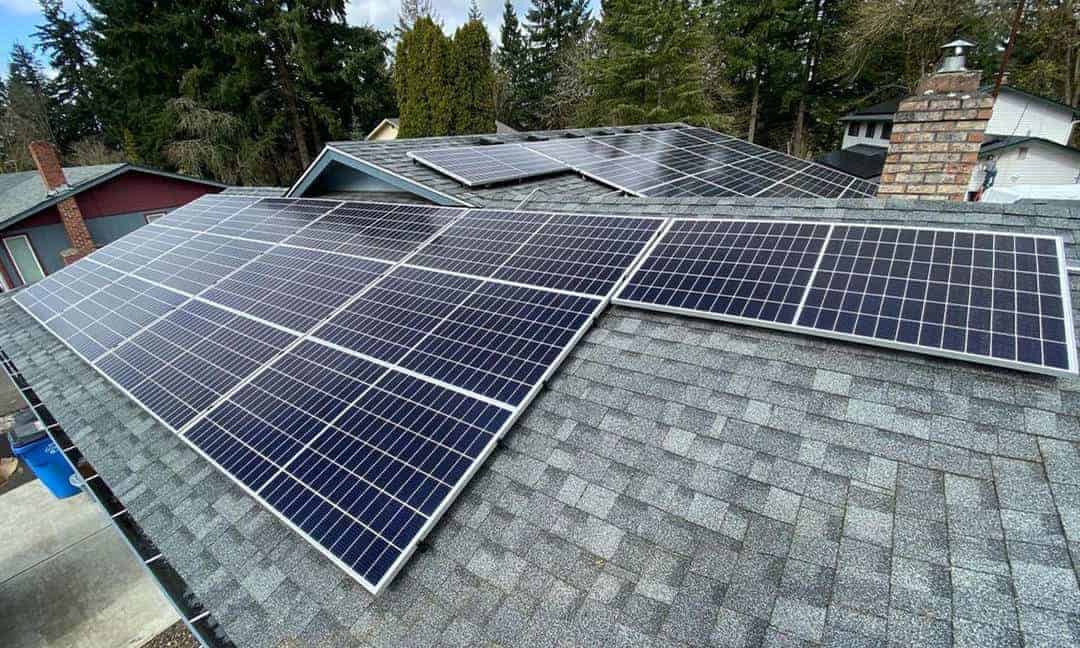I’m planning to invest in a home solar system. Perhaps you are too? Installing solar panels is an excellent way to reduce your electricity costs and reduce your carbon footprint. What I needed to know was how many solar panels do I need to make it worthwhile and make a serious reduction in my electricity bills.
So I decided to work out some targets by looking at my current electricity usage and then assessing how much power I can expect to get from installing solar panels on my roof. Several factors are involved in calculating this, but it all makes sense when you go through it step by step. So let me show you how to go about planning the number of solar panels you need.
How much electricity do you use?
Your first step in working out how many solar panels you need is to look at the amount of electricity you use in your home. If you hold onto your electricity bills, then this is a straightforward exercise. All you need to do is get twelve months’ worth of bills and add up your total electricity usage. You will need to take the usage figures in kilowatt-hours (kWh).
Make sure that you look at a full year of electricity usage because your bills will vary from season to season because the most significant users of energy in your home are heating and cooling systems like central heating and air-con. The average daily energy usage of a US home is 29 kWh.
If you want to get the most accurate estimate of your energy usage, then you can calculate your annual usage going back over a few years. This way, you can consider any changes in your average use during a freezing winter or scorching summer.
Once you have a representative figure for your annual energy use in kilowatt-hours, you just need to divide that by 365 to give you your average daily energy usage. Then you can use this number as a target for your home solar system. The next stage is to look at your home and see how much energy you can expect to generate from solar panels.
Annual energy use ÷ 365 = Average daily energy use
How much electricity can you generate from solar panels?
Several factors dictate how effective your home solar system will be at generating electricity. I’ll go through these point by point to give you a clear understanding of how much electricity you can expect your system to generate.
What direction does your roof face?
Because the US is in the northern hemisphere, the best place to install your solar panels is on a south-facing roof, assuming you have one. This is because the sun tracks across the sky to the south, so south-facing panels receive maximum sunlight.
If you don’t have a south-facing roof surface on which to put your solar panels, then the next best directions are east and west. An east-facing solar panel will pick up more sunlight in the morning and a west-facing slope will collect more sunlight in the afternoon.
How much space do you have for solar panels?
You won’t necessarily have to fill every square inch of available roof space with solar panels, but it’s helpful to measure the maximum space you have to give over to your solar installation.
Measure the length and width of the roof space you’re going to use and multiply them together to give you a total available space in square feet. Hang onto this measurement since we will use it later.
What are the peak solar hours in your area?
When it comes to solar power, not all places are equal. If you live in a hot and dry state, then your solar system will get lots of sunlight and be able to generate plenty of electricity. But if you’re in a cooler, northern state, then, unfortunately, your solar system will receive less sunlight and will need to be larger to generate the same amount of power.
We measure the amount of sunlight available in a specific place during peak solar hours. On average most locations in the US receive around four and a half peak sunlight hours per day, but this varies from less than four in the north to nearly six in the desert states of the southwest.
Clearly, the amount of sunlight you receive varies from season to season but the peak solar hours figure takes this into account and averages seasonal variances to give a representative daily figure.
It’s simple to use the peak solar hours figure to calculate how much energy a solar system will generate.
How much energy does a solar panel produce?
Not all solar panels are the same. Domestic solar panels contain either sixty or seventy-two solar cells. Also, some solar panels are more efficient than others. Solar panels receive a percentage efficiency rating that measures how much of the energy they receive from the sun they can convert into electricity.
Solar panel efficiency is improving all the time, but typical domestic solar panels have an efficiency rating of 15-22%.
A solar panel’s power output is measured in Watts. Domestic solar panels typically produce from 250 to 400W.
As you’d imagine the more power a panel produces the more expensive it is. If you have a lot of space available, you may choose to go with cheaper, less productive panels. But if you can only fit in a few solar panels, then it’s probably buying 400W panels to maximize your power output.
Watts per square foot
The typical solar panel size is around 65” x 40”. That works out to around 18 square feet.
If we divide the wattage of a solar panel by its size in square feet, we can calculate the watts per square foot it generates. Then we can use this measure to work out how much energy we can produce from our available roof space.
For example, an 18 ft² solar panel rated at 400 W will generate 400 ÷ 18 = 22.2 watts per square foot. If we go for a 250 W capacity panel, it will generate 250 ÷ 18 = 13.9 watts per square foot.
Now let’s run through an example so we can see how the whole process works.
An example calculation
The home is in an area that receives five peak solar hours per day. We have plenty of roof space, so we will go for some cheaper 250 W solar panels.
Each of these panels will produce 250 x 5 = 1.25 kWh per day.
So we’ll need approximately 11 solar panels to meet our energy needs.
And 21.9 ÷ 1.25 ≈ 18 Panels will give us 100% of the energy we need.
Now that we have this estimate, we can decide whether we want to generate more or less of our fuel needs through a home solar system. In the example above, it might be worth adding seven more panels to become wholly self-sufficient and reduce our electricity bill to zero.
Working out the system requirements in this way gives us the understanding that we need to make an informed choice about how many solar panels we need.
Does this all seem very complicated? Here’s a simple solution
if maths isn’t your strong suit, then don’t worry, you can use these sites to enter information about where you live and the space you have available for your solar system, and they will provide you with an estimate of how many solar panels you need.
And here’s another simple solution
by this stage, you understand the factors affecting how many solar panels you need. If you don’t want to get your hands dirty with calculations and measurements, then why not get an outside contractor to do it for you?
A local solar provider will be happy to assess your home and make recommendations about your solar installation. And now you understand what they’re talking about, and you’re able to make an informed decision.
Why not get some answers right away?
So, how many solar panels do I need? Now you have all the information you need, why not go ahead and make that calculation?
Here’s a quick recap of the steps you need to take.
- First, work out your average daily energy usage in kilowatt-hours.
- Decide how much of this power you want your solar system to provide
- Next, measure the total space you have available for your solar system.
- Find out the average daily peak solar hours where you live.
- Work out how many and what type of solar panels you will need to fulfill your energy requirements.
If you have any comments or questions about how many solar panels do I need, please share them below.

